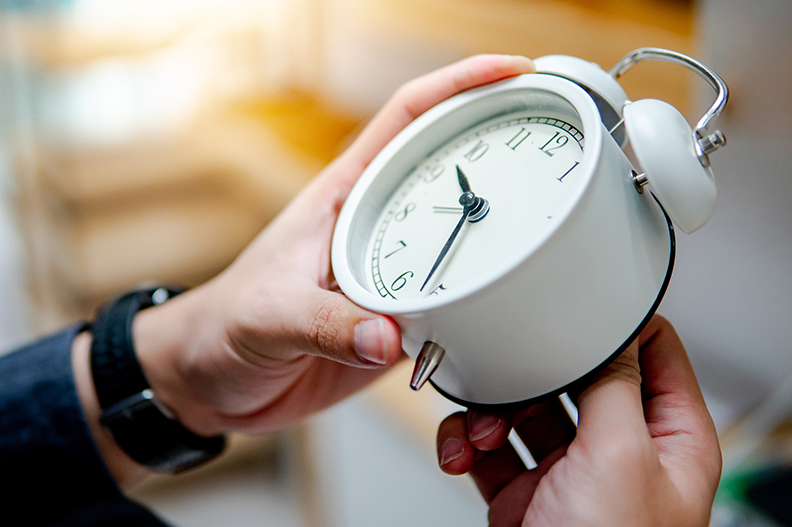Love it or hate it, Daylight Savings Time is right around the corner. Originally created to conserve energy resources, Daylight Savings Time was implemented in 1966 in all areas of the United States except for Hawaii, Arizona, and some U.S. territories. On the second Sunday in March, we set our clocks forward by one hour and reverse the time change back to “normal” in November. Most of us have been doing this seasonal back-and-forth for our entire lives…so, why does it feel like such a disruption?
Sleep and Time Change
Can one hour of sleep really make a significant difference in the way we feel and perform our daily tasks? The short answer: yes. Our bodies are guided by a circadian rhythm, 24-hour cycles that regulate our sleep, mood, and body functions. Adjustments to sleep schedules as well as the amount of daylight or darkness during the morning and evening hours can cause misalignment in our circadian rhythms, weakening our ability to get good sleep. On average, people get 40 minutes less sleep on the first several nights after a time change. Sleep is crucial to our health and wellness, and some people adjust better than others when their rhythms change. Do you struggle to recover during Daylight Savings Time? These tips are for you!
Create a Consistent Routine: Adults should aim for 7 hours of uninterrupted sleep per night, so schedule your evenings accordingly! Sticking to a bedtime routine can help signal your body that sleep is coming. If you struggle to settle your mind, try to avoid looking at screens before you fall asleep. Opt for a book instead!
Gradually Adjust Your Bedtime: Give your body a chance to adjust slowly prior to the time change. Experts recommend waking up 15-20 minutes earlier than normal on the days leading up to Daylight Savings. Then, on the Saturday before the time change, set your alarm clock back by an additional 15-20 minutes. Easing into the time change will help your body to have a smoother transition.
Enjoy the Outdoors: Time change or not, spending time outside helps promote healthy sleep. Exposure to sunlight during the day helps signal to your body that it’s time to sleep when it gets dark outside. Try to take a long walk outside every day leading up to Daylight Savings.
Be Caffeine Cautious: There’s no need to refuse your morning coffee, but if you’re struggling with sleep, it may be worthwhile to limit your intake of caffeine starting in the afternoon. Studies have shown that those who consume caffeine within 6 hours of going to bed will struggle with falling asleep. It’s important to protect your sleep cycles!
Avoid Naps: If Daylight Savings Time leaves you feeling behind on sleep, you might be tempted to catch up with a long nap during the day. This can lead to a cycle of struggling to sleep during the night! If you need a daytime pick-me-up, try to keep your nap at 20 minutes or less.
This Daylight Savings Time, be mindful of what your body needs and be proactive about getting the sleep you need. Worried about sleep? Our Sleep Center exists to help patients understand their sleep issues and get more restorative rest at night. Reach out to your physician today to learn more!


